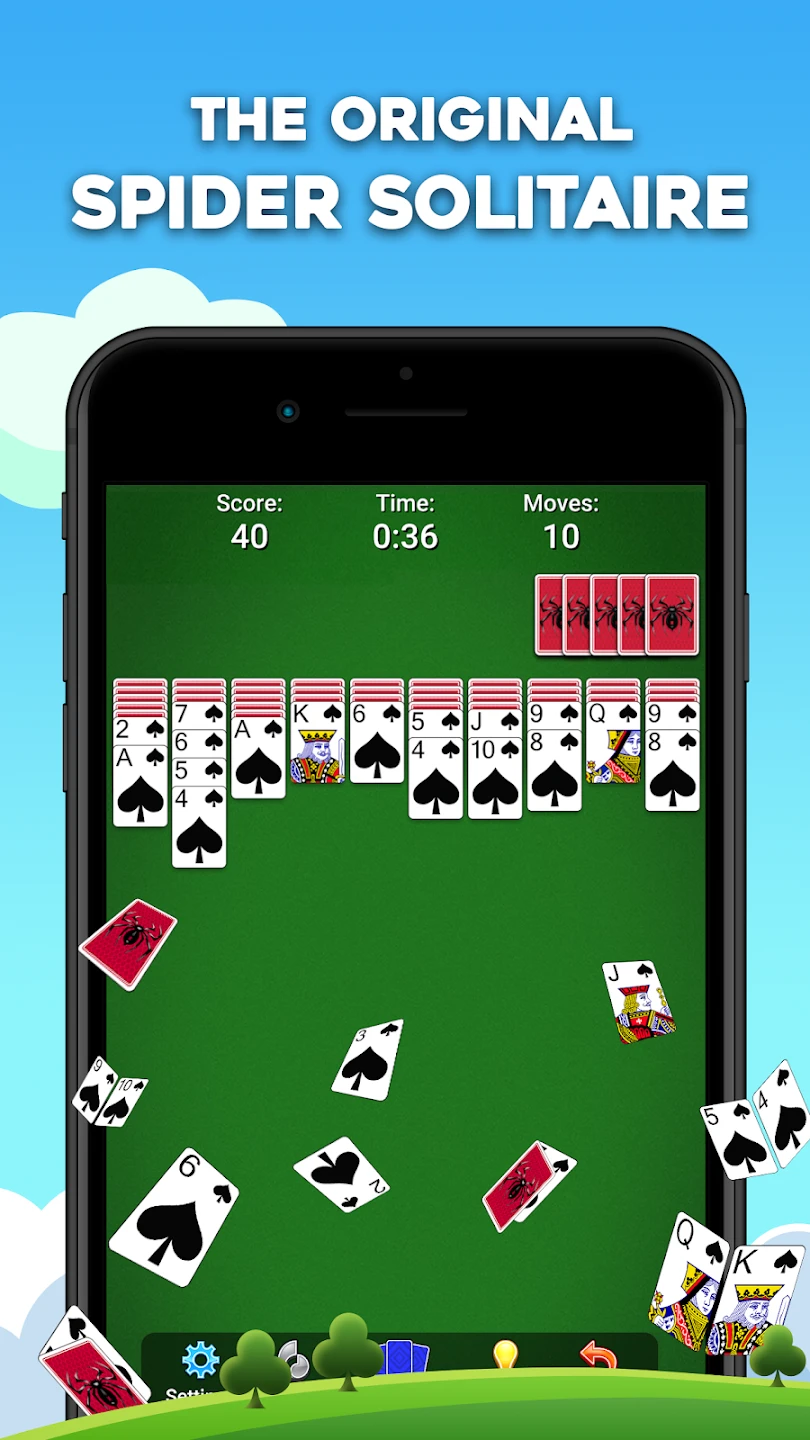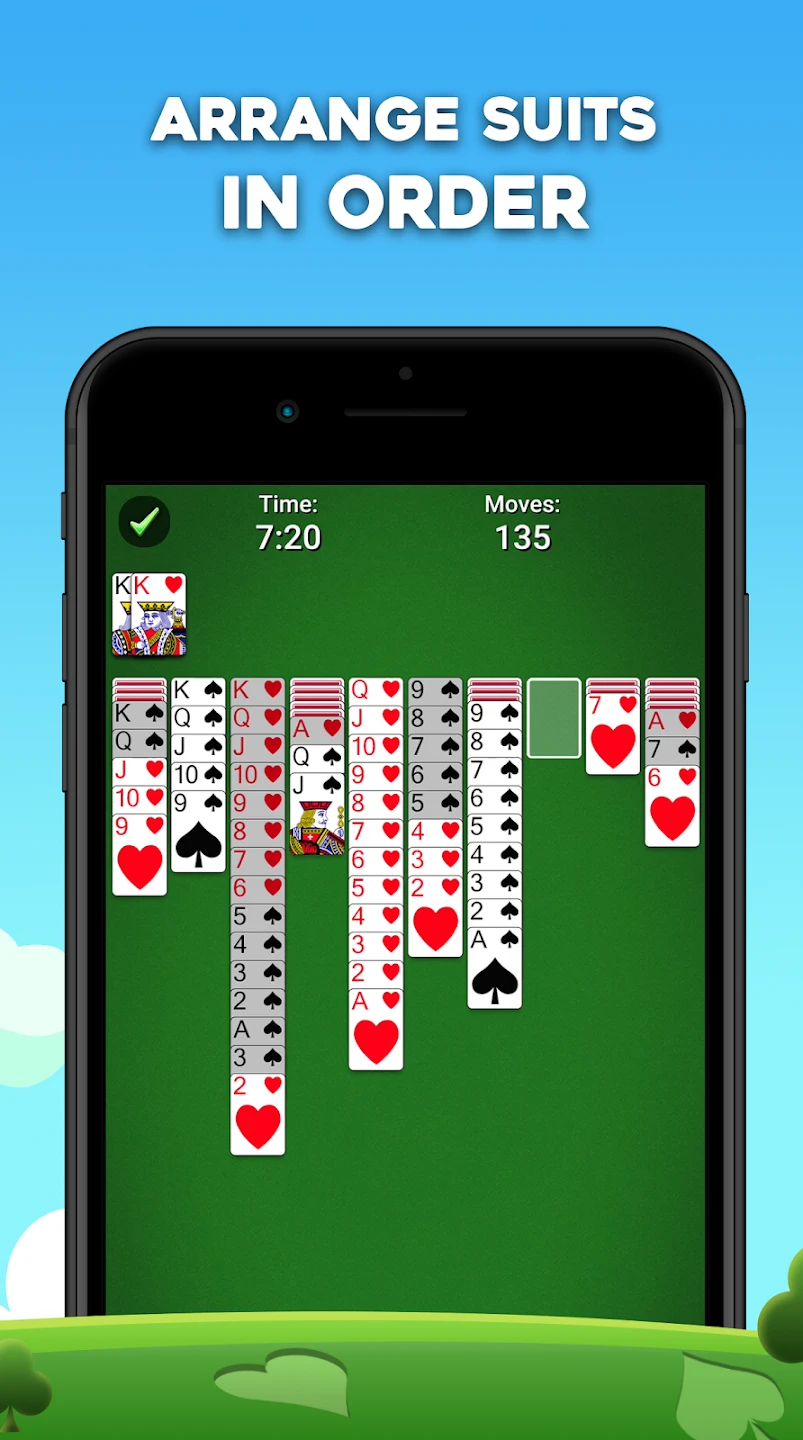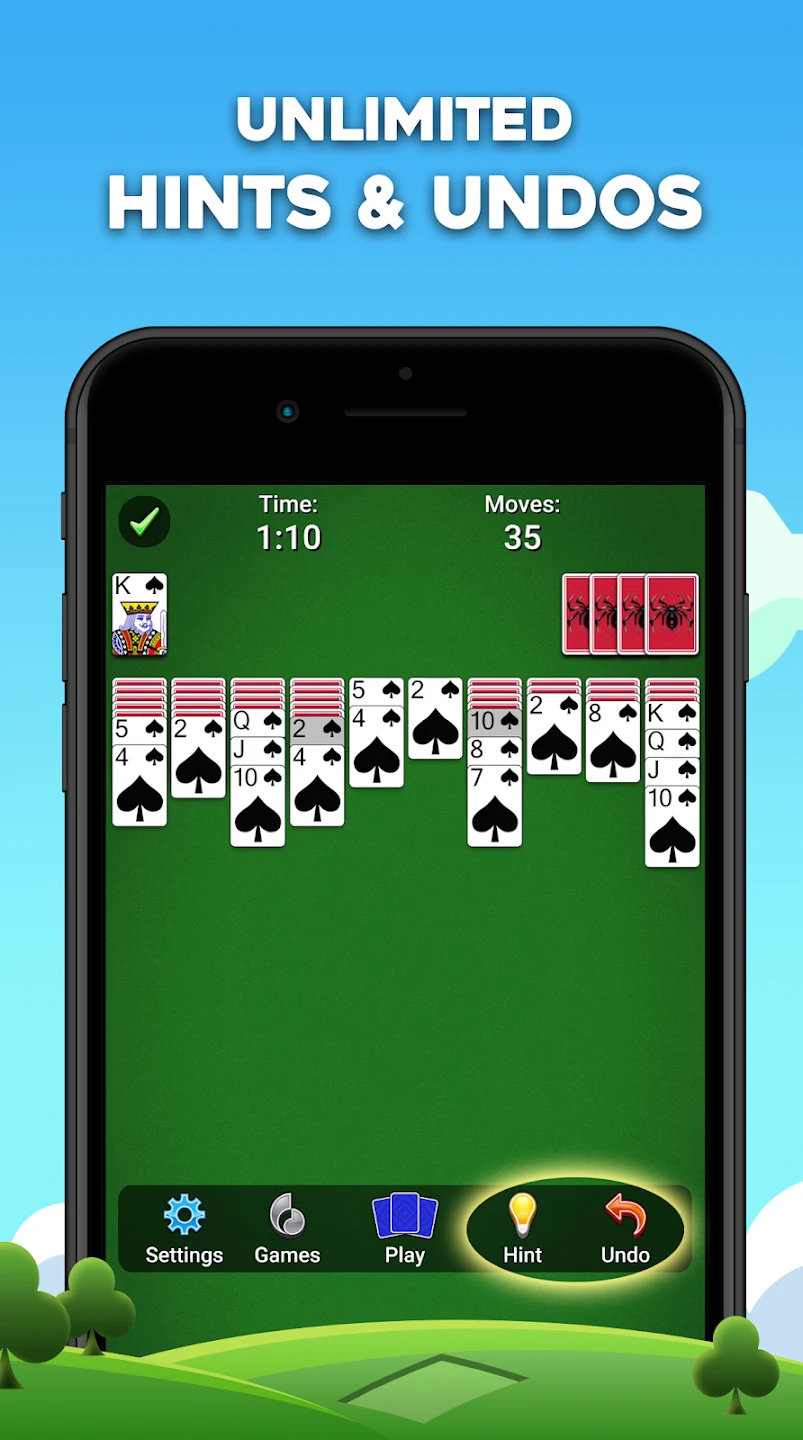 |
|
| Rating: 4.6 | Downloads: 50,000,000+ |
| Category: Card | Offer by: MobilityWare |
Spider Solitaire: Card Games is the digital adaptation of the classic patience card game, typically falling into the puzzle or arcade puzzle genre. Players are dealt cards face up and aim to build four foundation piles up from Ace to King, sorted by suit. The game is interesting due to its challenging yet strategic depth, requiring careful planning and sequencing, especially with the standard red and black color sequencing rule adding complexity.
Playing Spider Solitaire: Card Games offers a satisfying experience, often praised for its clean, focused visual style that highlights the cards without distraction. While typically a single-player experience focused on clearing the board within a time limit or achieving a high score, the inherent challenge and strategic card manipulation provide strong replay value. The game’s appeal lies in its perfect blend of simple rules and increasing difficulty.
Gameplay and Features
- [Core Gameplay Loop]: The core mechanic involves moving cards between ten tableau piles laid out on the board, arranging them so that cards decrease by one rank and alternate between red and black within each pile. The objective is to clear all cards from the tableau piles onto four foundation piles, starting with an Ace and building up to a King in the same suit. Players strategically plan moves to create sequences for removal, manage cards dealt into the stock pile, and uncover hidden cards.
- [Visuals or Art Style]: The visual presentation typically features sleek, minimalist card designs often rendered in vibrant, contrasting colors to clearly differentiate suits and values. The background can vary from simple, clean interfaces to subtle thematic designs like spider webs for the spider version within the game’s suite. Animations are generally smooth for card flips, moves, and stack removals.
- [Modes or Levels]: Classic Spider Solitaire mode usually offers different difficulties (e.g., one pack, two packs, four packs of cards) catering to skill levels. Multi-pack games increase the number of cards and challenge, often boosting the score potential. Some versions include timed challenges or bonus objectives, though traditional single-player campaign modes focusing on levels are less common than in other puzzle games.
- [Controls or Interface]: Controls are typically straightforward. Players use mouse clicks (or touch interactions on mobile/tablet) to select cards or stacks, and then click on a destination pile or the foundation area to move them. The interface includes clear displays of score (if applicable), remaining moves, cards left in the stock, and foundation piles. The control scheme is generally intuitive and easy for players to grasp quickly.
- [Customization or Power-ups]: Standard Spider Solitaire doesn’t heavily feature power-ups, customization options, shops, or progression systems beyond difficulty levels and potentially earned achievements or score leaderboards. Motivation for ongoing play comes from beating higher levels, clearing difficult layouts, achieving speed records, or unlocking potentially cosmetic elements like card back designs.
- [Any Special Systems]: While pure Spider Solitaire doesn’t usually feature unique systems like co-op, boss battles, or extensive unlockables, some variations or themed decks might offer special bonuses or challenges. Multiplayer leaderboards allow for competitive play against other online or local users.
How to Play
Beginner’s Guide:
- Step 1: Download and install the “Spider Solitaire: Card Games” app or launch the web-based version via its website or platform. Familiarize yourself with the basic layout showing the tableau piles, stock pile, foundation area, and score display.
- Step 2: Click on cards within the tableau piles to select them; only cards free or part of a decreasing sequence matching the color rule can be moved. Start identifying potential sequences that can be built within a pile to free up cards underneath and aim for cards that can be moved to the foundation piles.
- Step 3: Move selected cards or stacks to the foundation piles, placing them in order by rank and by suit (Ace, 2, 3, …, King). Continue moving cards from the tableau to foundations or between tableau piles until all cards are cleared from the tableau piles. The game is won once all cards are placed on the four foundation piles.
Pro Tips:
- Always check foundations first: Before moving cards on the tableau, check if any cards are available for placement in the foundation piles, as freeing up a foundation spot can unlock many moves.
- Build foundations whenever possible: Don’t delay moving cards to the foundations if they are eligible; it clears the board and allows more tableau moves.
- Focus on removing pairs: Prioritize creating and moving decreasing red-black pairs, which are often necessary to free up cards and progress significantly.
Similar Games
| Game Title | Why It’s Similar |
|---|---|
| Klondike Solitaire |
Shares a similar classic solitaire genre and core mechanics. Known for its strategic card sequencing and tableau building challenge, it offers a comparable puzzle-solving experience. |
| Blink |
Appeals to the same type of players who enjoy “Spider Solitaire: Card Games”. Offers fast-paced, challenging gameplay and stylized visuals centered around card manipulation. |
| Peg Solitaire |
Popular among fans of patience games. Has comparable gameplay and replayability with its own distinct puzzle mechanics focused on jumping and removing cards. |
Frequently Asked Questions
Q: Is Spider Solitaire: Card Games difficult to learn?
A: Generally, Spider Solitaire has simple rules – move cards around building decreasing alternating color stacks to free them up and place them on foundation piles from Ace to King by suit – but mastering it requires strategy and practice. The difficulty can vary significantly, often starting manageable for beginners and becoming quite challenging.
Q: How many cards are used in Spider Solitaire: Card Games?
A: Spider Solitaire typically uses one standard 52-card deck for its simplest mode, but most popular versions allow playing with two packs (104 cards) or even four packs (208 cards). This increases the number of cards to manage, the score potential, and the difficulty.
Q: Does Spider Solitaire: Card Games have different modes?
A: Yes, most versions of Spider Solitaire offer different modes primarily based on the number of decks: One Pack, Two Packs (or Red), and Four Packs (or Black). Each mode increases the number of cards and generally the challenge level, score multipliers, and potential for higher scores.
Q: Can you move multiple cards at once in Spider Solitaire: Card Games?
A: Absolutely! One of the core mechanics is moving stacks of cards simultaneously. You can move a stack only if the cards within that stack form a valid decreasing sequence alternating in color, allowing you to efficiently free cards trapped underneath and make progress.
Q: Are the cards always red and black?
A: In the standard ruleset of Spider Solitaire, when moving within the tableau piles, you must alternate between red and black suits (hearts/diamonds and clubs/spades). However, the foundation piles require building within a suit, so the color alternation is only enforced on the tableau, not on the foundations or in the stock (where cards are drawn randomly).
Screenshots
 |
 |
 |
 |
